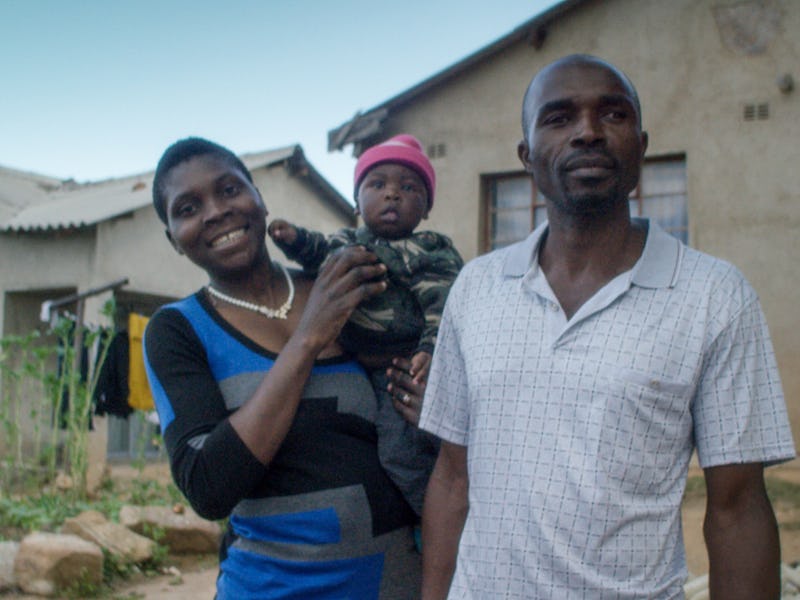Dash CEO Reveals How Crypto Is Changing Lives in Venezuela and Zimbabwe
The community has made a big impression.

One of the most promising use cases for cryptocurrency is its potential to help people all over the world transfer money without the hassle and attendant costs of dealing with remittence policies, currency exchange, or in the case of some economies, hyperinflation.
“Despite its volatility, cryptocurrency offers a stable alternative for people residing in hyperinflation economies,” Ryan Taylor, CEO of Dash Core Group, tells Inverse. “We are seeing this play out in Venezuela right now, which has rapidly become the second largest market for Dash.”
Dash, short for “digital cash,” is a fork of bitcoin created in 2014 that promises transactions in under a second and fees of just a few cents. Bitcoin transactions, by comparison, can reach an average of $55 and take hours to confirm. Its popularity in hyperinflation-hit Venezuela and Zimbabwe has helped make Dash the 13th-largest cryptocurrency according to CoinMarketCap.
Film production collective Frame 48 announced on Friday the release of a documentary about Dash’s work in Zimbabwe. Starting from Scratch focuses on Dash-powered money transfer system Kuvacash, which claims to be the country’s first peer-to-peer localized digital currency payments service, enabling users to transfer cash with just a mobile number.
“Zimbabwe’s challenges stem from both a distrust of the financial system and a lack of access to physical cash needed to facilitate transactions,” Taylor says. “Zimbabwe has also faced hyperinflation in the past, and that memory is a driving force for the adoption of cryptocurrency.”
In the years prior to the 2008 hyperinflation crisis, Zimbabweans saw their money lose value as the country’s dollar was re-denominated three times. Citizens needed to use alternative currencies like the U.S. dollar to purchase international goods and services, but this came with steep fees. The national government issued bind notes pegged to the U.S. dollar, but even these notes lose value.
Hyperinflation is a big issue in Zimbabwe.
Cryptocurrencies like Dash can help users practically anywhere make international transactions through a secure, decentralized network running on a blockchain. It’s seen as a key use case for crypto: Ray Youssef, head of exchange platform Paxful, told Inverse in March that the company’s growth in Africa is “absolutely massive,” particularly in Nigeria and Ghana. The price of one bitcoin surged to $34,000 on Zimbabwe-based exchange Golix in December 2017, far higher than its peak global estimated trading price of under $20,000.
Venezuela is also jumping on Dash and cryptocurrency, as the country’s bolívar experiences severe inflation rates:
Taylor claims that over 300 merchants are accepting Dash in Venezuela, with tens of thousands of user wallet downloads each month. Latin American brokerage firms that take Dash transactions also report that over 80 percent of the cryptocurrency’s volume comes from Venezuela.
“This all illustrates the immense value people see in switching to cryptocurrency when facing hyperinflation,” Taylor says.
Taylor claims that Dash is uniquely positioned to answer these calls due to its governance structure. The project is managed by a self-funded decentralized autonomous organization. Its treasury receives 10 percent of all mined Dash, with 45 percent going to miners and the other 45 percent to shareholder-like “masternodes” that hold more than 1,000 coins. These masternodes vote on the project’s future direction. Kuvacash was approved in a November 2017 vote, with 840 masternodes voting in favor, 337 against and 31 abstaining.
“Investing in unstable business environments such as Zimbabwe is infeasible for entrepreneurs without outside assistance,” Taylor says. “In the case of Bitcoin and most other cryptocurrencies, that assistance would need to come from altruistic donors. This model suffers from the ‘coattail riding’ problem, since the benefits of expanded adoption would primarily extend to the network, not the donors.”
“Dash’s treasury model ensures that when the network authorizes treasury-funded grants, the entire network is diluted together and therefore share equally in the cost,” Taylor says. “No donors are needed in the traditional sense, doing away with the ‘coattail riding’ problem and enabling investments infeasible for other networks.”
The author of this story has a stake in bitcoin and Ethereum.